N95s and other respirators: What nurses need to know
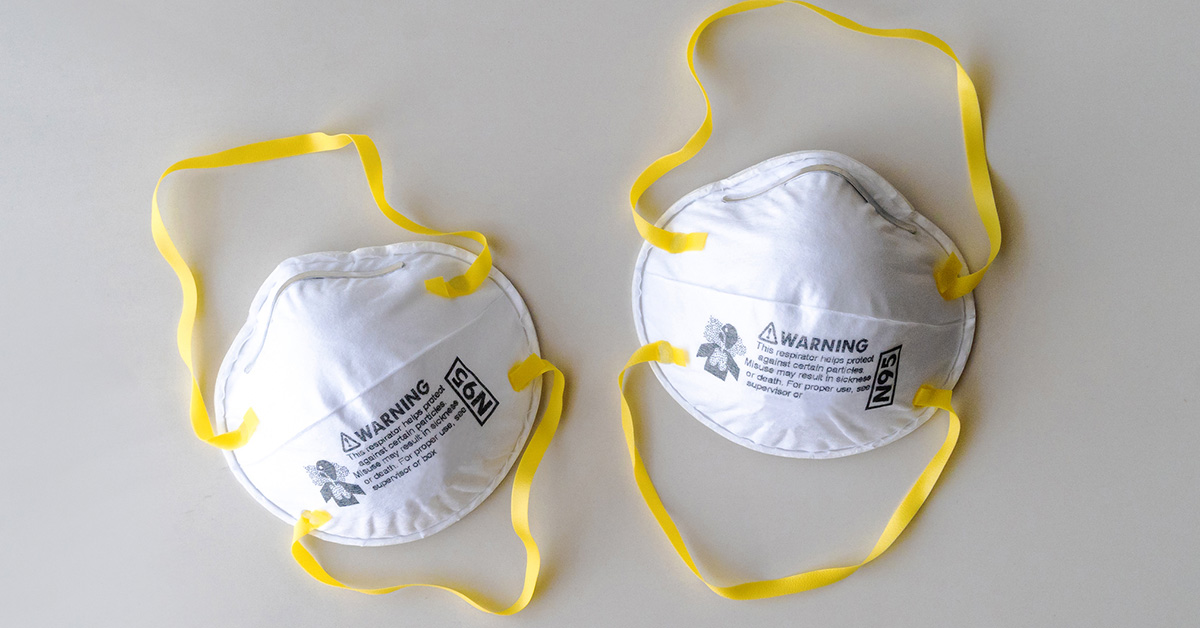
Important updates: Federal cuts jeopardize nurse health and safety
Take action to reinstate NIOSH and protect America’s workers
|
Every day, nurses and other health care workers rely on N95s and other respirators to protect their health at work. But the hospital industry and their corporate allies have long sought to limit and eliminate use of N95s and other respirators in health care. This webpage shares important information and resources for nurses.
The Department of Health and Human Services (HHS), which oversees agencies like the CDC and NIOSH, is undergoing significant reorganization and cuts. The closure of public health programs means some resources are being pulled from agency websites. To maintain nurses’ access to important information on respiratory protection, we are reproducing key information and resources from NIOSH and other agencies here.
About N95s and other respirators
What are respirators and why are they important?
Respirators are a type of personal protective equipment (PPE). Respirators are worn over the mouth and nose to protect the wearer from inhaling hazardous substances, such as lead, asbestos, silica, smoke, and infectious diseases.
Workers in a wide variety of industries, including health care, construction, manufacturing, agriculture, firefighting, emergency medical services, and more, rely on respirators to keep them safe at work. Respirators are the last line of defense between workers and debilitating illness and death.
What types of respirators are commonly used by health care workers?
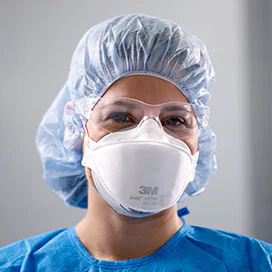
N95 and other filtering facepiece respirators (FFRs) are disposable respirators. They are made of a filter material that removes particles from the air as the wearer breathes.
| Advantages | Limitations |
|
|
Source: NIOSH Respirator Selection Guide for the Healthcare Industry
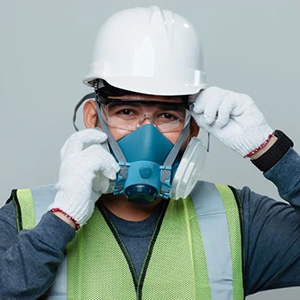
Elastomeric respirators (EHMRs) are reusable respirators. They typically have exhalation valves, but some are designed without an exhalation valve or with an exhalation valve filter.
| Advantages | Limitations |
|
|
Source: NIOSH Respirator Selection Guide for the Healthcare Industry
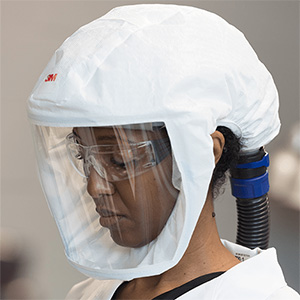
Powered air-purifying respirators (PAPRs) are reusable respirators. They protect against gases, vapors, or particles when equipped with the appropriate filter, cartridge, or canister.
| Advantages | Limitations |
|
|
Source: NIOSH Respirator Selection Guide for the Healthcare Industry
Check out the following documents for more detailed information on the types of respirators and different levels of protection!
- Respirator selection guide for the healthcare industry: NIOSH resource assisting health care facilities in selecting appropriate respirators during conventional operations
- Types of respiratory protection infographic
- What are air-purifying respirators?
- A guide to air-purifying respirators
- Understanding the difference: Surgical mask, N95 respirator, and EHMR
- NIOSH respirator filter classes
How do you properly put on and take off a respirator?
Strict procedures for donning and doffing respirators are crucial to ensuring respirators provide the designated level of protection. Follow clear instructions, such as those linked below by NIOSH and OSHA, to properly put on and take off your respirator. To confirm a respirator effectively seals to the wearer’s face before it is used in the workplace, a fit test must be conducted annually by the employer. A user seal check should also be performed by the wearer every time a respirator is worn to ensure an adequate seal is achieved and the wearer is receiving the designated level of protection.
- How to wear your filtering facepiece respirator
- How to properly put on and take off a disposable respirator
- Seven steps to correctly wear a respirator
- Filtering out confusion: Frequently asked questions about respiratory protection, user seal check
What are the essential parts of a Respiratory Protection Program?
Employers who require workers to use a respirator must implement a Respiratory Protection Program (RPP) under OSHA’s Respiratory Protection Program Standard (29 CFR 1910.134).
Essential components of RPPs include:
- Medical clearance: Health care workers must complete a medical evaluation and be cleared before wearing any type of respirator. Medical clearance helps prevent injuries by ensuring workers do not have existing medical conditions that would make respirator use unsafe.
- Fit testing: Health care workers should undergo fit testing annually and anytime a different model, style, or size respirator is used. Fit tests ensure that tight-fitting respirators, such as FFRs or EHMRs, form a complete seal to the face and provide the designated level of protection. Detailed information on fit testing can be found in the Hospital Respiratory Protection Program Toolkit linked below.
- Training: Employers must train health care workers on how to properly don, doff, use, clean, and maintain their respirator. Training should occur annually as well as when the need arises, such as when exposure conditions change or new types or models of respirators are implemented.
For more information on Respiratory Protection Programs in health care settings and their elements, reference the following resources.
- Hospital respiratory protection program toolkit: A multi-agency guide to assist hospitals in preventing the transmission of aerosol transmissible diseases to health care personnel
- Implementation Guide to Support Use of Elastomeric Half Mask Respirators in Healthcare: NIOSH-funded guidance by the University of Maryland to help hospitals incorporate EHMRs in their respiratory protection programs
- Key requirements of a respiratory protection program infographic
- Understanding filtration efficiency testing and fit testing in filtering facepiece respirators (FFRs)
- Filtering out confusion: Frequently asked questions about respiratory protection, fit testing
- Why are annual fit tests required?
- Summary of respirator fit test requirements
The importance of respirator certification
For decades, NIOSH has inspected and certified respirators at its National Personal Protective Technology Laboratory (NPPTL). NIOSH certification ensures that respirators meet strict safety standards and provide the intended level of protection. NIOSH certification is the only way for a worker to know that a respirator will protect them.
Video: 100 Years of Respiratory Protection
This video was produced in 2019 to recognize the 100th anniversary of the first respirator approval by the Bureau of Mines. The video demonstrates the evolution and importance of respiratory protection from the point of view of NIOSH workers within the NPPTL who are deeply invested in the work that they do.
How does NIOSH/NPPTL certify respirators?
- Manufacturers must first obtain a NIOSH manufacturer code by answering a defined set of questions meant to assess their readiness to apply for NIOSH approval.
- After obtaining a manufacturer code, manufacturers are required to submit their application package, including but not limited to design information, pre-submission test data, user instructions, and a product quality control plan.
- Once a submission is accepted, NIOSH will test multiple respirator samples for each respirator brand and model type. The tests conducted will vary depending on the type of respirator, but can include determination of particulate filter penetration, exhalation resistance, and inhalation resistance.
- NIOSH also evaluates a manufacturer’s quality management system to ensure they have the processes in place to maintain the quality of their respirators. This includes a site visit where NIOSH ensures inspection procedures are fully in place. The quality assurance review often presents the biggest challenge for new applicants.
- Once a respirator is approved, NIOSH will publish the approval number in the Certified Equipment List so employers and users can verify its approval.
If you are interested in learning more about NPPTL and its respirator approval process, check out this document!
Are NIOSH-certified respirators actually more protective than non-NIOSH-certified respirators?
There are several scientific studies that demonstrate that non-NIOSH certified respirators are not as protective as NIOSH-certified respirators and fail to meet the designated levels of protection. The findings of two research articles are summarized below:
- In 2020, NIOSH conducted 356 assessments of non-NIOSH approved N95 respirators. In only 39% of the tests, all units met NIOSH requirements and tested above 95% filtration efficacy. In the remaining 61% of tests, 35% observed all units failing to meet filtration standards and 26% experienced units testing both below and above 95% filtration efficiency. This study revealed that over half of non-NIOSH-approved respiratory protective devices would not adequately protect wearers.
- Due to the Covid-19 pandemic, the FDA granted an Emergency Use Authorization (EUA) to allow the use of non-NIOSH approved respirators provided that these respirators underwent tests similar to the methods of the NPPTL. Of 7,413 tests, only 19.3% of N95 respirators were approved for an EUA.
You can access the above-mentioned studies here:
- Respiratory Protection in a Time of Crisis: NIOSH Testing of International Respiratory Protective Devices for Emergency Use
- International assessment results on non-NIOSH approved respirators by the national personal protective technology laboratory (NPPTL): a data note
Does NIOSH/NPPTL conduct counterfeit surveillance?
NPPTL’s critical importance was demonstrated early in the Covid-19 emergency when counterfeit respirators flooded the U.S. market. NPPTL identified counterfeit respirators and removed them from circulation.
Can you tell the difference?
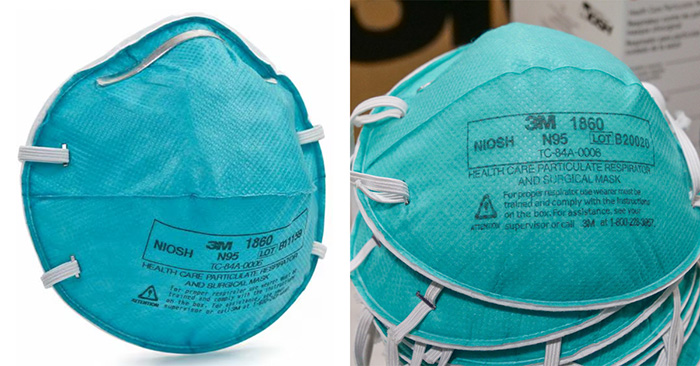
Real N95 (left) and counterfeit N95 (right)
Video: How to Tell if Your N95 Respirator is NIOSH Approved
- How to tell if your N95 respirator is NIOSH approved: Factsheet
- Informing Workers of Counterfeit and Misrepresented Respirators
Additional resources
- Considerations for respirator selection in health care
- Respirator use and infection control in health care
- NIOSH Reach II study: Understanding and selecting respiratory protection devices
- Getting optimal performance from a powered air‐purifying respirator (PAPR) depends on the condition of its battery!
- Facial hairstyles and filtering facepiece respirators